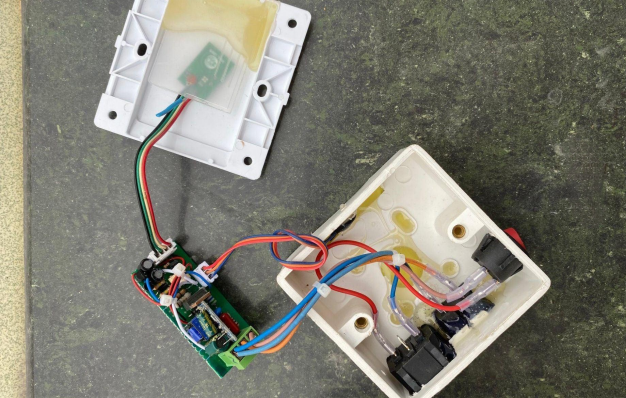
A soldering iron is one of the most frequently used tools in daily tasks. If you occasionally step away from the workbench for a short period, it might not be a problem. However, if you leave it unattended for a longer time, the iron can overheat. Even though it mostly contains PTC heating elements, there can still be damage, which is not ideal for the environment. So, how can we improve this situation?
In this article, we'll discuss a circuit that addresses this issue: a motion-sensing microwave module, RCWL-05-15. This module is less affected by temperature changes. On its backside, there is a ceramic capacitor for delay settings. Officially, a 104 capacitor provides a delay of approximately 500-600 seconds, but real measurements show around 360 seconds, possibly due to variations in working voltage since the module lacks a voltage regulation circuit.



The 86-box has a three-terminal AC power input and a two-terminal connection for the soldering iron.

The control circuit includes a 5V power supply module and a homemade solid-state switch. Since the soldering iron is a resistive load, the bidirectional TRIAC's resistive-capacitive absorption circuit is disconnected.

Overall setup:

Due to the module's insufficient output capacity to drive an optocoupler, a C945 transistor is used for buffering.





